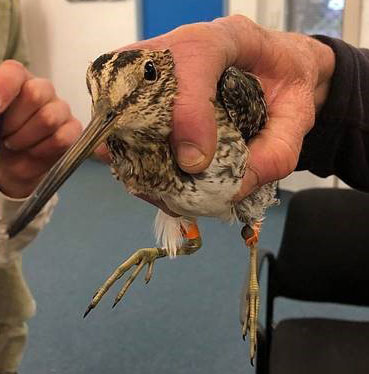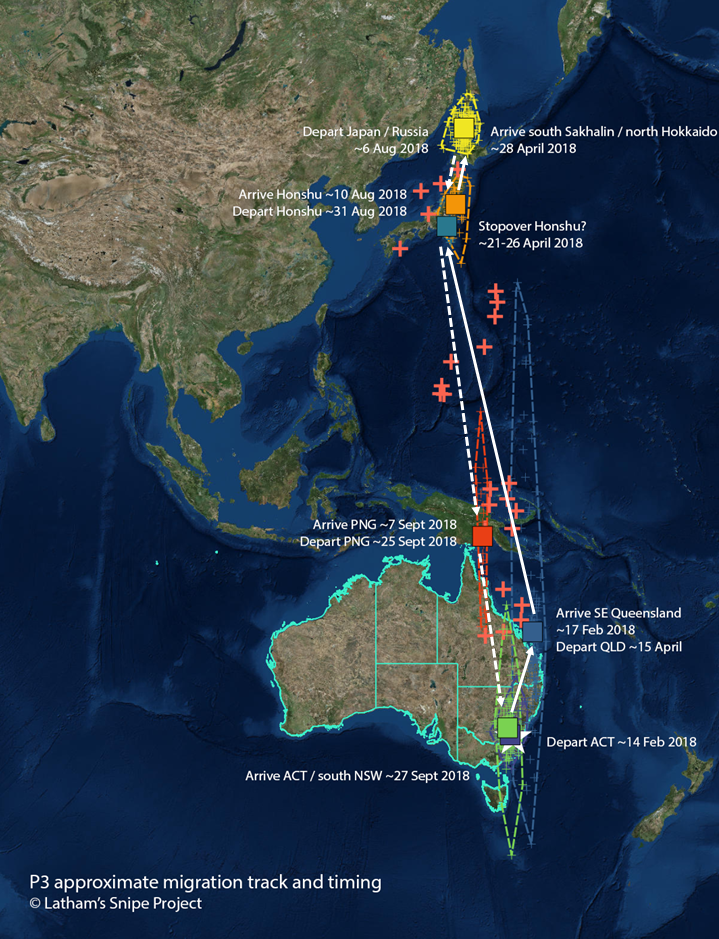
Researchers elated by Latham’s Snipe recapture
 |
|
|
P03 back in Canberra |
|
Researchers working on the Latham’s Snipe migration tracking project made an exciting and significant research advancement in November 2018 when they successfully recaptured the second ever Latham’s Snipe carrying a light-level geolocator on its migration between Australia and Japan.
Since geolocators were deployed on these shorebird species in the Spring of 2015 there has been only one Latham’s Snipe full migration track obtained. Data from the geolocator provided researchers with enlightening details on this bird migration from Port Fairy in south-west Victoria, to far north Queensland and on to breeding grounds in Japan.
Of key interest in returned data from the second Latham’s Snipe was indications that the bird continued on from Japan to breeding grounds in southern Sakhalin, Russia.
Previously only a tiny proportion of snipe were thought to travel beyond Japan to Russia. While the resolution of geolocator data are quite coarse, around 100-300km, this migration track supports this notion,
commented project lead-researcher Dr Birgita Hansen from Federation University’s Centre for eResearch and Digital Innovation’s .
The find is encouraging for the Latham’s Snipe project team, which includes researchers, ornithologists and community groups, including school children engaged through the Canberra Young Rangers Program. Participants have carried out observations, bird counts, surveys, geolocator studies, radio tracking and satellite tracking. Dr Hansen commented:
It was hugely exciting and a big reward for the project, after spending all of last spring-summer season trying unsuccessfully to retrieve tagged birds in Port Fairy.
The migration path of the Latham’s Snipe affectionately known as “P3” can be seen in the image below. The bird departed Canberra in February 2018, it stopped over in south-east Queensland, and then continued its northward migration through Japan and onto northern Hokkaido or southern Sakhalin in Russia for the breeding season. It returned to the ACT via central Japan and Papua New Guinea in late September.
 |
|
Geolocator migration track and timing |
For further details about this project visit:
https://www.cerdi.edu.au/cb_pages/lathams_snipe.php
https://lathamssnipeproject.wordpress.com/
